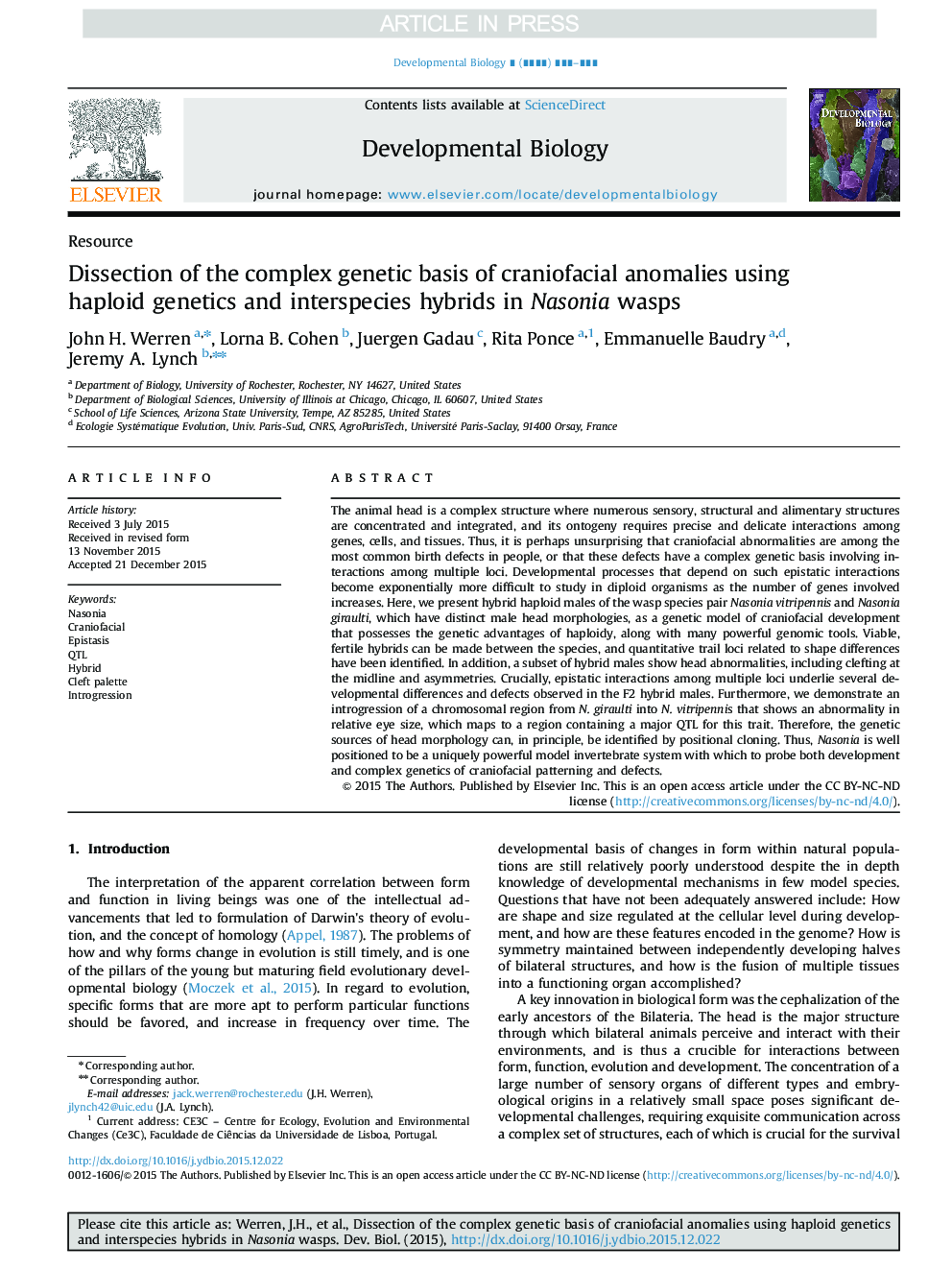| کد مقاله | کد نشریه | سال انتشار | مقاله انگلیسی | نسخه تمام متن |
|---|---|---|---|---|
| 10931126 | 1093614 | 2016 | 15 صفحه PDF | دانلود رایگان |
عنوان انگلیسی مقاله ISI
Dissection of the complex genetic basis of craniofacial anomalies using haploid genetics and interspecies hybrids in Nasonia wasps
دانلود مقاله + سفارش ترجمه
دانلود مقاله ISI انگلیسی
رایگان برای ایرانیان
کلمات کلیدی
موضوعات مرتبط
علوم زیستی و بیوفناوری
بیوشیمی، ژنتیک و زیست شناسی مولکولی
بیولوژی سلول
پیش نمایش صفحه اول مقاله

چکیده انگلیسی
The animal head is a complex structure where numerous sensory, structural and alimentary structures are concentrated and integrated, and its ontogeny requires precise and delicate interactions among genes, cells, and tissues. Thus, it is perhaps unsurprising that craniofacial abnormalities are among the most common birth defects in people, or that these defects have a complex genetic basis involving interactions among multiple loci. Developmental processes that depend on such epistatic interactions become exponentially more difficult to study in diploid organisms as the number of genes involved increases. Here, we present hybrid haploid males of the wasp species pair Nasonia vitripennis and Nasonia giraulti, which have distinct male head morphologies, as a genetic model of craniofacial development that possesses the genetic advantages of haploidy, along with many powerful genomic tools. Viable, fertile hybrids can be made between the species, and quantitative trail loci related to shape differences have been identified. In addition, a subset of hybrid males show head abnormalities, including clefting at the midline and asymmetries. Crucially, epistatic interactions among multiple loci underlie several developmental differences and defects observed in the F2 hybrid males. Furthermore, we demonstrate an introgression of a chromosomal region from N. giraulti into N. vitripennis that shows an abnormality in relative eye size, which maps to a region containing a major QTL for this trait. Therefore, the genetic sources of head morphology can, in principle, be identified by positional cloning. Thus, Nasonia is well positioned to be a uniquely powerful model invertebrate system with which to probe both development and complex genetics of craniofacial patterning and defects.
ناشر
Database: Elsevier - ScienceDirect (ساینس دایرکت)
Journal: Developmental Biology - Volume 415, Issue 2, 15 July 2016, Pages 391-405
Journal: Developmental Biology - Volume 415, Issue 2, 15 July 2016, Pages 391-405
نویسندگان
John H. Werren, Lorna B. Cohen, Juergen Gadau, Rita Ponce, Emmanuelle Baudry, Jeremy A. Lynch,